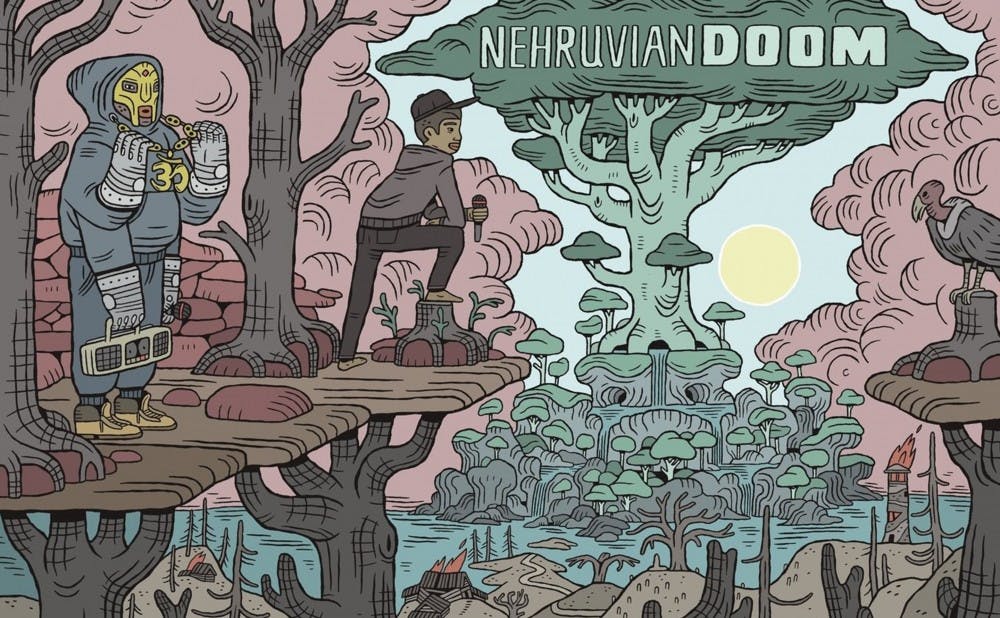As disappointments go, NehruvianDOOM is one of the better ones. Although the collaboration between rappers Daniel Dumile (DOOM) and Bishop Nehru showed promise, heavy-handed lyrics and clichéd hooks take away from the framed awkwardness that are DOOM’s beats. While, at times, Nehru’s seriousness breeds an interesting effect over the quirky samples, it usually sounds vain and forced. This melodrama is to be expected, though, considering he is only eighteen.
DOOM, on the other hand, released his first solo album, Operation: Doomsday, as MF DOOM in 1999. Since then, he has developed a distinct style by combining strange and somewhat goofy instrumentation with outlandish lyrics. He is also known for the hilarious sound collages he places throughout his albums. As a rapper, he has developed a trademark style of continuously rapping for three and a half beats of a measure and then awkwardly pausing before the next line. While simple, it certainly speaks to his prestige as a rapper where something like that can be a trademark. Excessive assonance is another characteristic DOOM trait, to the point where anyone who overindulges in internal rhymes is labeled as a DOOM imitator.
Bishop Nehru is certainly someone who is highly influenced by DOOM’s work. While he is influenced stylistically, thematically it would be hard for him to be any more different. This contrast is most clearly seen in the last track, “Disastrous.” Near the end of his verse, Nehru raps, “Everything happens for a reason / just try to think positive / your mind is an achievement,” which showcases a genuineness bordering on cheesiness that characterizes his verses throughout the album, as well as his style in general. DOOM, on the other hand, opens saying “They call him Brillo pad beard / now on with the show / his flow is mad weird.” Between referring to himself in third person and self-deprecating his facial hair and his style, DOOM immediately imposes a much humbler, more personable feel to the music.
Still, Nehru raps on every track in the album. Although DOOM produced every song, he only raps on a few. Even when he does rap he sounds as if he is holding back, leaving room for his protégé to shine. At times, Nehru comes through. On “Darkness (HBU)” for instance, he does nothing short of kill the beat, as he raps about dealing with the uncertainty in the world and horror in the news. That may sound slightly cliché, but it is presented in a genuine way that foreshadows Nehru developing into an interesting, mature artist once his own style matures. The awkward drums and quirky samples that usually supplement DOOM’s outlandish verses take on a menacing, slightly disturbed air under the serious tone of Nehru’s lyrics.
For the most part, though, Nehru would benefit from a less heavy-handed approach. Even after a couple plays, the hooks on “So Alone” and “Mean the Most” are pretty unlistenable. They remind us that despite Nehru’s heavy lines, he is still just an eighteen-year-old kid with DOOM guiding him along. Throughout the album, Nehru seems like he is trying to prove himself artistically. Still, some of his verses showed promise. They remind that once Nehru develops his own original style, he may be an interesting, insightful and worthwhile artist. While NehruvianDOOM is worth the listen, it is an overall forgettable album.
Get The Chronicle straight to your inbox
Signup for our weekly newsletter. Cancel at any time.

